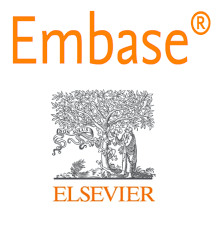Comparison of Closed Reduction and Cast with Percutaneous K-Wire Fixation for Extra-Articular Radial Fractures, in a tertiary care centre
Keywords:
Distal radius fracture; extra-articular fracture; closed reduction; K-wire fixation; cast immobilization.Abstract
Background: Distal end radius fractures are among the most common orthopedic
injuries, especially prevalent in the elderly due to osteoporosis and in younger adults
following high-energy trauma. Treatment options vary from conservative casting to
surgical fixation techniques. This study aims to compare the clinical and radiological
outcomes of closed reduction and cast application versus percutaneous K-wire
fixation in extra-articular distal radius fractures. Methods: This prospective
randomized comparative study was conducted over 12 months at a tertiary care
center, involving 60 patients with extra-articular distal radius fractures (AO Type 23-
A2 and A3). Patients were divided into two groups: Group A received closed
reduction and cast application; Group B underwent percutaneous K-wire fixation
followed by immobilization. Functional outcomes were assessed using the Gartland
and Werley scoring system, while radiological parameters such as radial height, volar
tilt, and radial inclination were evaluated at 12 weeks. Complications, union time,
and grip strength recovery were also recorded. Results: The mean age of patients
was comparable between the two groups. The K-wire group demonstrated
significantly better restoration of radial height (11.7 mm vs 8.1 mm), volar tilt (7.5°
vs 4.9°), and radial inclination (19.1° vs 14.2°) (p < 0.0001). Functional outcomes
were superior in the K-wire group, with 53.3% achieving an excellent score
compared to 26.7% in the cast group (p = 0.004). Complication rates were higher in
the cast group (40% vs 20%, p = 0.03), with malunion and stiffness more frequently
observed. Grip strength and union time also favored the K-wire group (91.4% vs
81.2%; 7.3 weeks vs 8.8 weeks, respectively). Conclusion: Percutaneous K-wire
fixation offers superior radiological outcomes, earlier functional recovery, and fewer
complications compared to cast immobilization alone in the treatment of extraarticular distal radius fractures. It is an effective and minimally invasive treatment
option, particularly for fractures at high risk of redisplacement.
.png)









